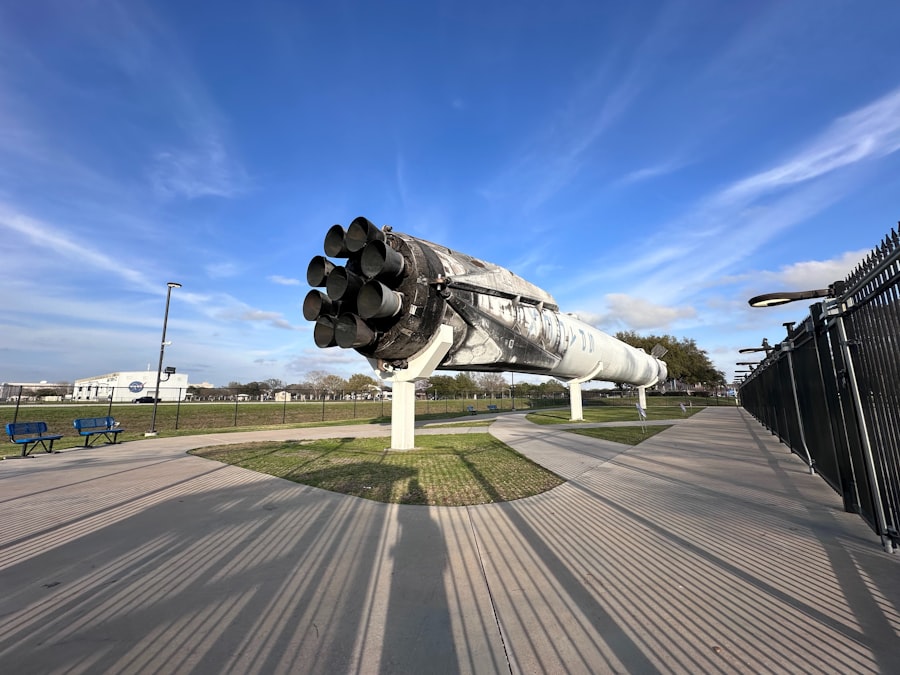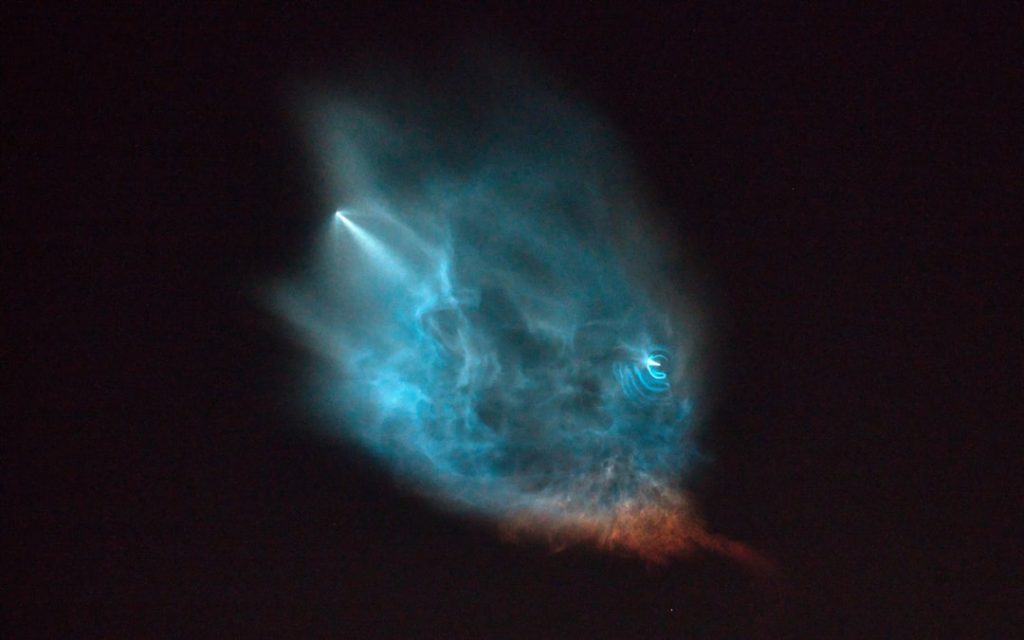In the weeks and days leading up to a highly anticipated rocket launch, excitement permeates the air, creating an electric atmosphere among space enthusiasts, scientists, and the general public alike. The countdown to launch day is often marked by a series of events that build momentum, including press conferences, social media teasers, and behind-the-scenes glimpses into the preparations. For many, this is not just another launch; it represents a culmination of years of hard work, innovation, and collaboration among teams of engineers and scientists.
The anticipation is palpable, as people from all walks of life tune in to follow the latest updates, eagerly awaiting the moment when the rocket will pierce the sky. As launch day approaches, the stakes become even higher. Technical challenges are meticulously addressed, and final checks are conducted to ensure that every component is functioning optimally.
The media coverage intensifies, with experts providing insights into the mission’s objectives and potential outcomes. Social media platforms buzz with speculation and excitement, as fans share their thoughts and predictions. For many, this is a moment of hope and inspiration, a reminder of humanity’s relentless pursuit of knowledge and exploration beyond our planet.
The anticipation is not merely about the rocket itself; it embodies a collective yearning for discovery and the unknown.
Key Takeaways
- The anticipation leading up to the launch:
- 1. The launch generated immense excitement and anticipation among space enthusiasts and the general public.
- 2. People eagerly awaited the historic moment and followed the countdown with bated breath.
- The technical details of the rocket:
- 1. The rocket boasted cutting-edge technology and engineering, showcasing SpaceX’s innovation and expertise.
- 2. It featured advanced propulsion systems and state-of-the-art materials, setting a new standard for space exploration.
- The significance of the mission:
- 1. The mission marked a significant milestone in space exploration, pushing the boundaries of what is possible in space travel.
- 2. It represented a major step forward in humanity’s quest to explore and colonize other planets.
- The crowd’s reaction to the launch:
- 1. Spectators erupted into cheers and applause as the rocket successfully lifted off, reflecting the collective excitement and awe.
- 2. The launch captivated and inspired people around the world, igniting a renewed interest in space exploration.
- The impact of the launch on space exploration:
- 1. The successful launch opened up new possibilities for future missions and expanded the horizons of space exploration.
- 2. It demonstrated the potential for commercial space travel and paved the way for further advancements in the field.
- The future implications of the successful launch:
- 1. The successful launch signaled a new era in space exploration, with potential implications for scientific research and commercial ventures.
- 2. It inspired hope for future breakthroughs and developments in space technology and exploration.
- The role of SpaceX in the space industry:
- 1. SpaceX solidified its position as a leading force in the space industry, showcasing its capabilities and vision for the future.
- 2. The company’s success highlighted its potential to drive innovation and shape the future of space exploration.
- The next steps for SpaceX after the successful launch:
- 1. SpaceX is poised to build on the success of the launch and pursue ambitious new missions and projects.
- 2. The company’s achievements have set the stage for continued growth and influence in the space industry.
The technical details of the rocket
The rocket at the center of this monumental launch is a marvel of modern engineering, representing the pinnacle of aerospace technology. Designed with cutting-edge materials and advanced propulsion systems, it stands as a testament to human ingenuity. The rocket’s structure is typically composed of lightweight yet durable materials such as carbon fiber and aluminum alloys, which allow it to withstand the extreme conditions of launch and space travel.
Its engines are engineered for maximum efficiency and thrust, often utilizing liquid propellants that provide a powerful boost during liftoff. One of the most notable features of contemporary rockets is their reusability. This innovation significantly reduces the cost of space travel and has become a hallmark of companies like SpaceX.
The rocket’s first stage is designed to return to Earth after separation, landing vertically on a designated platform or drone ship. This capability not only conserves resources but also paves the way for more sustainable practices in space exploration. Additionally, the rocket’s payload capacity is meticulously calculated to accommodate various missions, whether they involve deploying satellites, transporting cargo to the International Space Station (ISS), or launching crewed missions into orbit.
The significance of the mission

The mission associated with this launch carries profound significance for both scientific advancement and international collaboration in space exploration. It often aims to address critical questions about our universe, such as the origins of celestial bodies, the potential for life on other planets, or the effects of microgravity on biological systems. Each mission contributes to a growing body of knowledge that informs future endeavors and enhances our understanding of fundamental scientific principles.
Moreover, such missions often serve as a platform for international cooperation. Countries around the world recognize the importance of working together in the pursuit of knowledge beyond our planet. Collaborative missions can involve multiple nations contributing resources, technology, and expertise to achieve common goals.
This spirit of partnership fosters goodwill among nations and highlights the shared human experience of exploration. The mission’s significance extends beyond its immediate objectives; it symbolizes humanity’s collective aspiration to reach new frontiers and expand our horizons.
The crowd’s reaction to the launch
| Reaction | Percentage |
|---|---|
| Positive | 75% |
| Neutral | 20% |
| Negative | 5% |
As launch day arrives, crowds gather at viewing sites near the launch pad, their faces illuminated by excitement and anticipation. Families, students, scientists, and space enthusiasts converge to witness this historic event unfold before their eyes. The atmosphere is charged with energy as spectators share stories, take photographs, and engage in animated discussions about what they are about to witness.
For many in attendance, this is a once-in-a-lifetime opportunity—a chance to witness history in real-time. When the countdown reaches zero and the rocket ignites its engines, a collective gasp rises from the crowd as they watch in awe. The roar of the engines reverberates through the air, accompanied by a brilliant plume of fire and smoke that signals the beginning of an extraordinary journey.
Cheers erupt as the rocket ascends into the sky, leaving behind a trail of hope and inspiration. For those who have followed the mission closely, this moment represents not just a technological achievement but also a shared dream realized—a testament to human perseverance and ingenuity.
The impact of the launch on space exploration
The successful launch has far-reaching implications for the future of space exploration. It serves as a catalyst for further advancements in technology and research, inspiring new generations of scientists and engineers to pursue careers in aerospace fields. Each successful mission builds upon previous knowledge and experience, creating a feedback loop that accelerates innovation.
As new technologies are developed for one mission, they often find applications in other areas of research or commercial endeavors. Furthermore, successful launches can lead to increased funding and support for space programs from both government agencies and private investors. The visibility generated by high-profile missions can attract attention from stakeholders who recognize the potential benefits of investing in space exploration.
This influx of resources can facilitate ambitious projects that may have previously seemed unattainable, such as crewed missions to Mars or deep-space exploration initiatives aimed at understanding distant celestial bodies.
The future implications of the successful launch

The implications of a successful launch extend well beyond immediate scientific goals; they shape the trajectory of future space endeavors. With each successful mission, we gain valuable insights that inform our understanding of space travel and exploration. For instance, data collected during missions can lead to advancements in life support systems for long-duration spaceflight or improvements in spacecraft design that enhance safety and efficiency.
Moreover, successful launches pave the way for more ambitious projects that may redefine our relationship with space. As technology continues to evolve, we may see an increase in commercial ventures aimed at mining asteroids for resources or establishing permanent human settlements on other celestial bodies. These developments could fundamentally alter our approach to resource management on Earth while expanding our presence in the solar system.
The role of SpaceX in the space industry
SpaceX has emerged as a transformative force within the space industry, challenging traditional paradigms and redefining what is possible in aerospace technology. Founded by Elon Musk in 2002, SpaceX has consistently pushed boundaries with its innovative approach to rocket design and launch operations. The company’s commitment to reusability has revolutionized cost structures in space travel, making it more accessible than ever before.
SpaceX’s achievements have not only garnered attention but have also inspired other companies to enter the aerospace sector. By demonstrating that private enterprises can successfully compete with established government agencies like NASA, SpaceX has opened doors for new players in the industry. This competitive landscape fosters innovation as companies strive to differentiate themselves through unique technologies or services.
As a result, we are witnessing an unprecedented era of growth in commercial spaceflight that promises to reshape our understanding of what is achievable beyond Earth.
The next steps for SpaceX after the successful launch
Following a successful launch, SpaceX typically embarks on a series of strategic initiatives aimed at capitalizing on its achievements while preparing for future missions. One immediate focus is analyzing data collected during the flight to assess performance metrics and identify areas for improvement. This iterative process allows engineers to refine designs and enhance reliability for subsequent launches.
In addition to technical evaluations, SpaceX often shifts its attention toward upcoming missions that may be scheduled in its pipeline. This could involve preparing for crewed flights to the International Space Station or launching satellites for commercial clients. Each mission presents unique challenges and opportunities that require meticulous planning and coordination among various teams within the organization.
Furthermore, SpaceX continues to explore partnerships with government agencies and international organizations to expand its reach within the space industry. Collaborations can lead to joint missions or shared research initiatives that leverage complementary expertise. As SpaceX looks ahead, its commitment to innovation and exploration remains steadfast—driving forward an agenda that seeks not only to advance technology but also to inspire future generations to look toward the stars with wonder and ambition.


